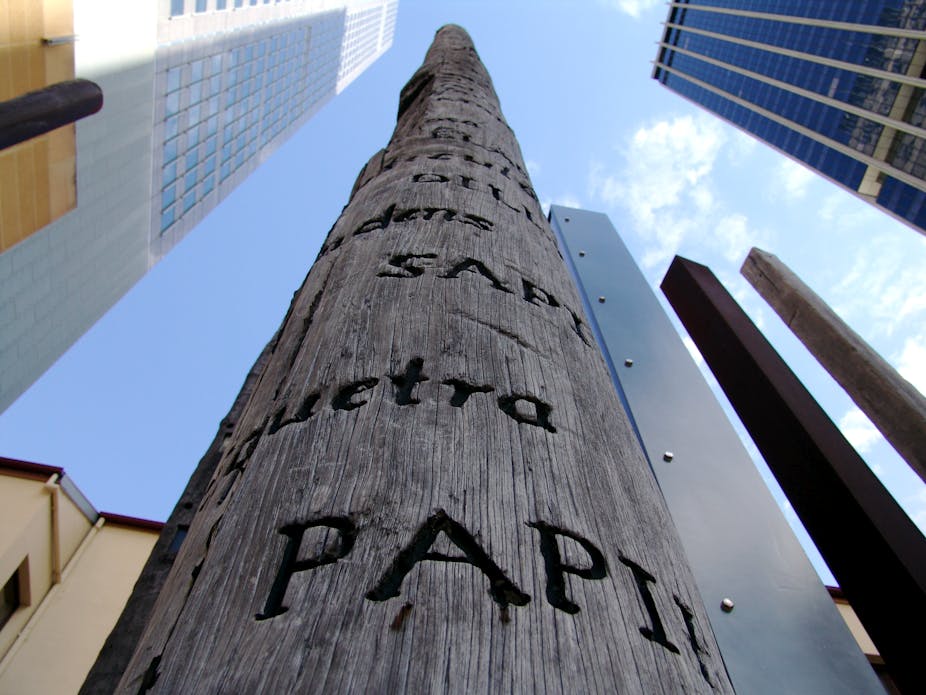Indigenous communities are devastated when languages are lost.
This was the conclusion of the House of Representatives Standing Committee on Aboriginal and Torres Strait Islander Affairs last month. The committee members also found that Indigenous language plays a crucial role in people’s relationships with family, country, kin and culture.
This fits with analysis I recently co-authored showing Indigenous Australians who were learning an Indigenous language were significantly more likely to report that they were happy all or most of the time in the previous four weeks compared to those who were not.
Who’s learning Indigenous languages?
Recent census data can tell us much about Indigenous language usage in Australia. But as with much analysis of Indigenous outcomes, demographic and population processes confuse the story on the maintenance of Indigenous languages.
On the one hand, the analysis that I have carried out on census data showed an increase in the number of Indigenous Australians who spoke an Indigenous language at home from 51,990 counted in 2006 to 60,550 in 2011. There were 16.5% more people in 2011 who identified as being Indigenous and speaking an Indigenous language compared to 2006.
But on the other hand, as the number of people identified as being Indigenous also increased, there was in fact a small decline in the percentage of the relevant population speaking an Indigenous language — from 12.1% to 11.6%.
Of those classified languages with at least 100 Indigenous speakers in 2006, the biggest increase was among those who reported that they spoke “Aboriginal English”. There were 1,037 speakers in 2011 compared to 471 in 2006 — a 120% increase over the period.
There were, however, also a number of specific languages that increased substantially over the period. This includes Nunggubuyu (114% increase), Manyjilyjarra (107%), Kunwinjku (80%) and Ngarrindjeri (71%). Some of these languages have been a focus of considerable government investment and, although it is difficult to establish causality with data in the census, it would appear that this investment may be paying dividends.
The geography of government policy
Not surprisingly, there was considerable variation in Indigenous language usage across the country. More than half of all Indigenous language speakers (34,086 people counted in the census) live in the Northern Territory. This represents about 64.7% of the NT’s Indigenous population. At the other end of the spectrum, 2% or less of the population in New South Wales, Victoria, Tasmania and the ACT speak an Indigenous language at home.
Some of this geographical variation is due to specific historic government policies. However, demography is also likely to be playing a large part. In order for a language to be maintained and strengthened, it needs speakers. These speakers ideally should be in relatively close proximity to one another. While it is not possible to identify causal relationships with cross-sectional data, the following figure shows a strong association between the proportion of an area’s total population that identifies as being Indigenous and the proportion of the Indigenous population who speak an Indigenous language at home.

The results presented in the above figure clearly demonstrate a relationship between Indigenous language usage in an area and the percentage of the population in that area that identify as being Indigenous.
There are some outliers. For example, in the areas of Cherbourg and Palm Island (both in Queensland), more than 95% of the population identify as being Indigenous, despite there being very few Indigenous language speakers. This clearly reflects past government policy in these (and other) areas with many Indigenous people being actively discouraged, and at times prohibited, from speaking their own language. Nonetheless, there is considerable overlap between language usage and the Indigenous share of the area.
The language of loss
The map highlights a potential tension in current government policy. In 2006, the average Indigenous Australian lived in an area where 18.8% of the total population identified as being Indigenous. By 2011, this had declined to 16.4%.
Demographically, there is less of an opportunity for Indigenous Australians to speak an Indigenous language with others in their area in 2011 compared to 2006, and a greater incentive to speak English only.
Not all of this increasing Indigenous urbanisation is driven by government policy. However, a focus on “closing the gap” in socioeconomic outcomes between Indigenous and non-Indigenous Australians, as well as an increasing concentration of services in certain areas will probably encourage Indigenous Australians to move from remote to less remote areas.
Put simply, demographic trends, potentially exacerbated by certain government policies, are making it much more difficult for governments and the Indigenous community to maintain Indigenous languages in Australia.
It is not surprising, therefore, that the first recommendation of the standing committee’s report was that:
Commonwealth Government include in the Closing the Gap framework acknowledgement of the fundamental role and importance of Indigenous languages in preserving heritage and improving outcomes for Indigenous peoples.
While this acknowledgement would be useful, it won’t solve the fundamental dilemma at the heart of Indigenous policy in Australia – how to improve the health, education and employment prospects of Indigenous Australians without sacrificing the enduring differences in language and culture valued by Indigenous Australians and the majority of the rest of the population.

